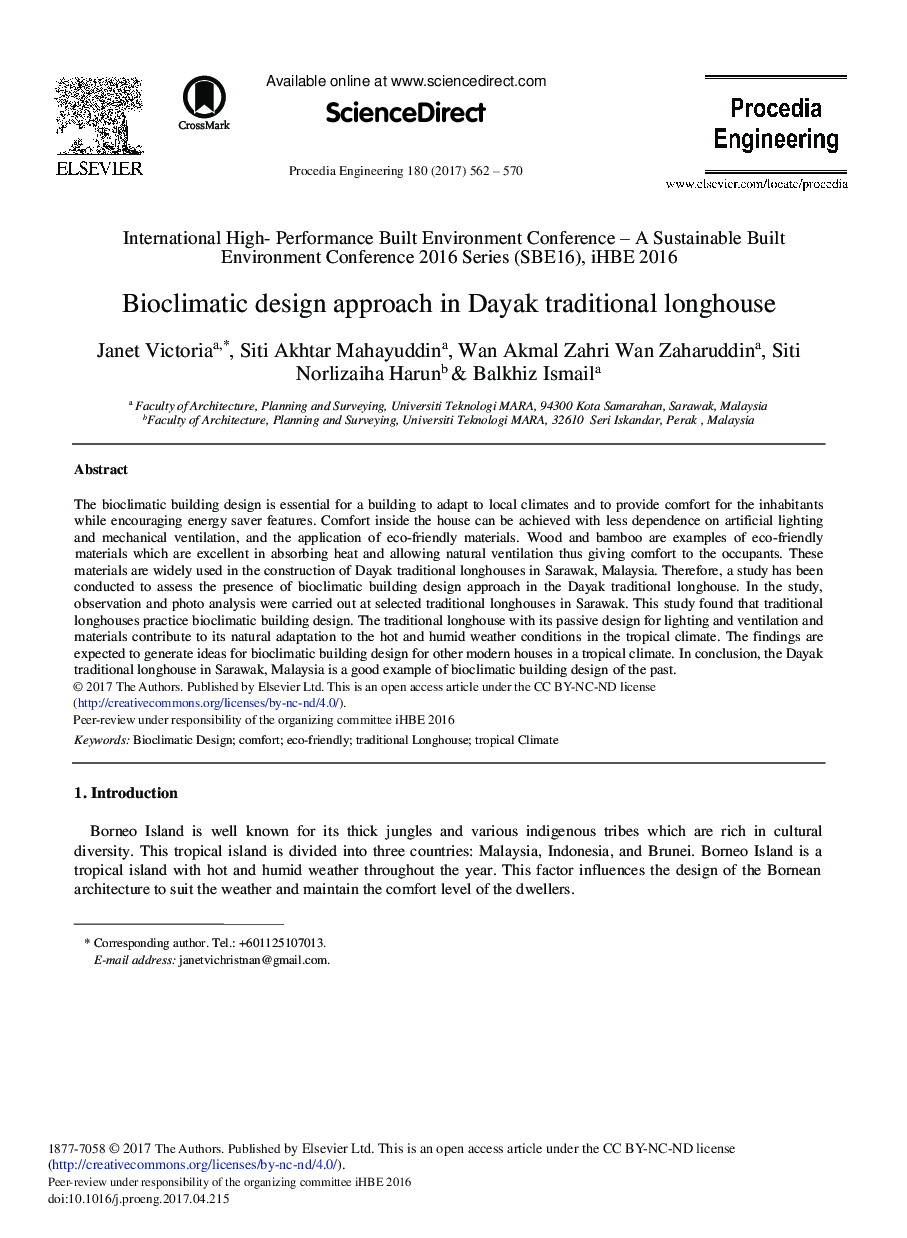| Article ID | Journal | Published Year | Pages | File Type |
|---|---|---|---|---|
| 5028960 | Procedia Engineering | 2017 | 9 Pages |
Abstract
The bioclimatic building design is essential for a building to adapt to local climates and to provide comfort for the inhabitants while encouraging energy saver features. Comfort inside the house can be achieved with less dependence on artificial lighting and mechanical ventilation, and the application of eco-friendly materials. Wood and bamboo are examples of eco-friendly materials which are excellent in absorbing heat and allowing natural ventilation thus giving comfort to the occupants. These materials are widely used in the construction of Dayak traditional longhouses in Sarawak, Malaysia. Therefore, a study has been conducted to assess the presence of bioclimatic building design approach in the Dayak traditional longhouse. In the study, observation and photo analysis were carried out at selected traditional longhouses in Sarawak. This study found that traditional longhouses practice bioclimatic building design. The traditional longhouse with its passive design for lighting and ventilation and materials contribute to its natural adaptation to the hot and humid weather conditions in the tropical climate. The findings are expected to generate ideas for bioclimatic building design for other modern houses in a tropical climate. In conclusion, the Dayak traditional longhouse in Sarawak, Malaysia is a good example of bioclimatic building design of the past.
Related Topics
Physical Sciences and Engineering
Engineering
Engineering (General)
Authors
Janet Victoria, Siti Akhtar Mahayuddin, Wan Akmal Zahri Wan Zaharuddin, Siti Norlizaiha Harun, Balkhiz Ismail,
